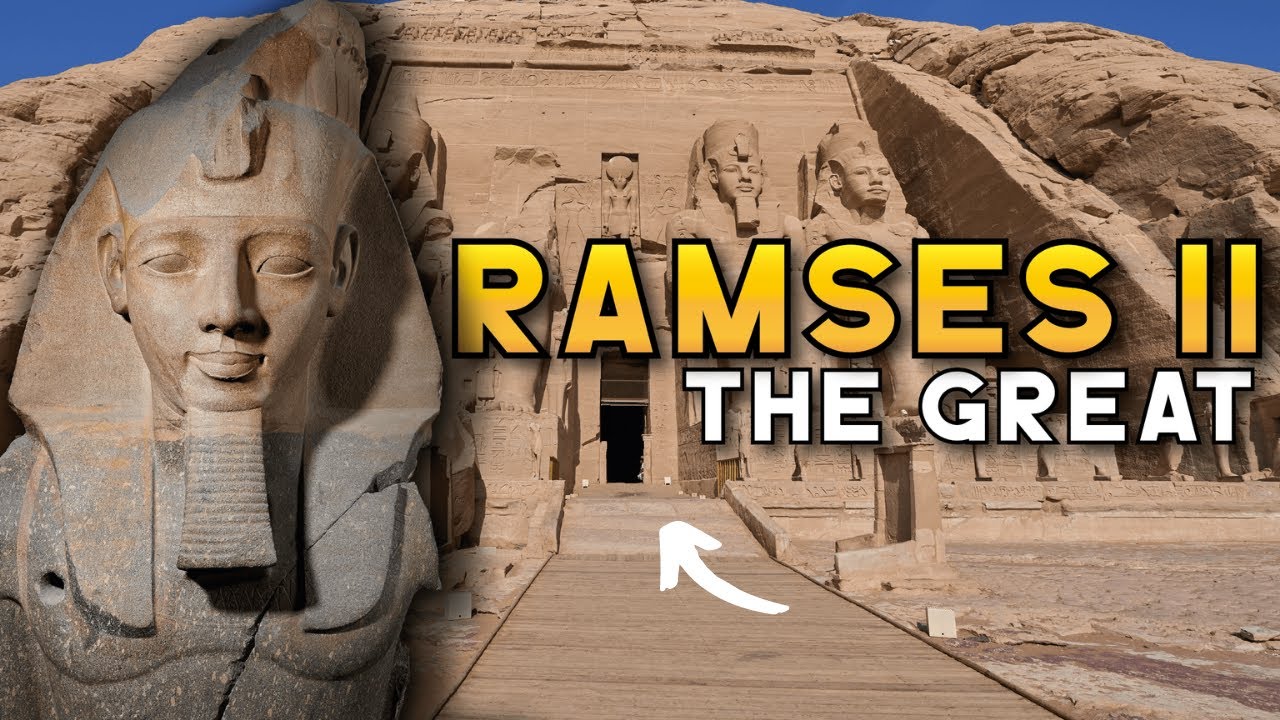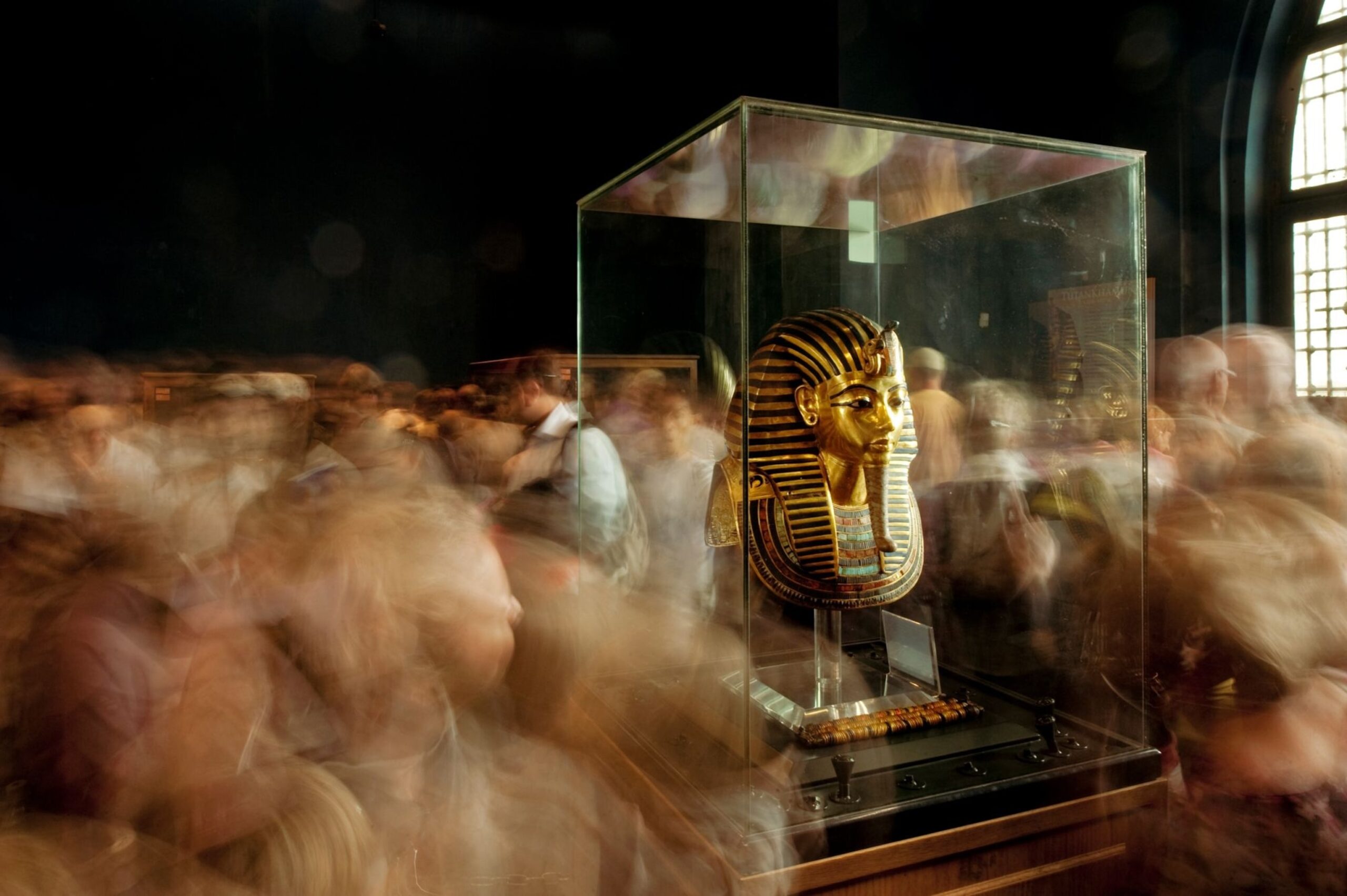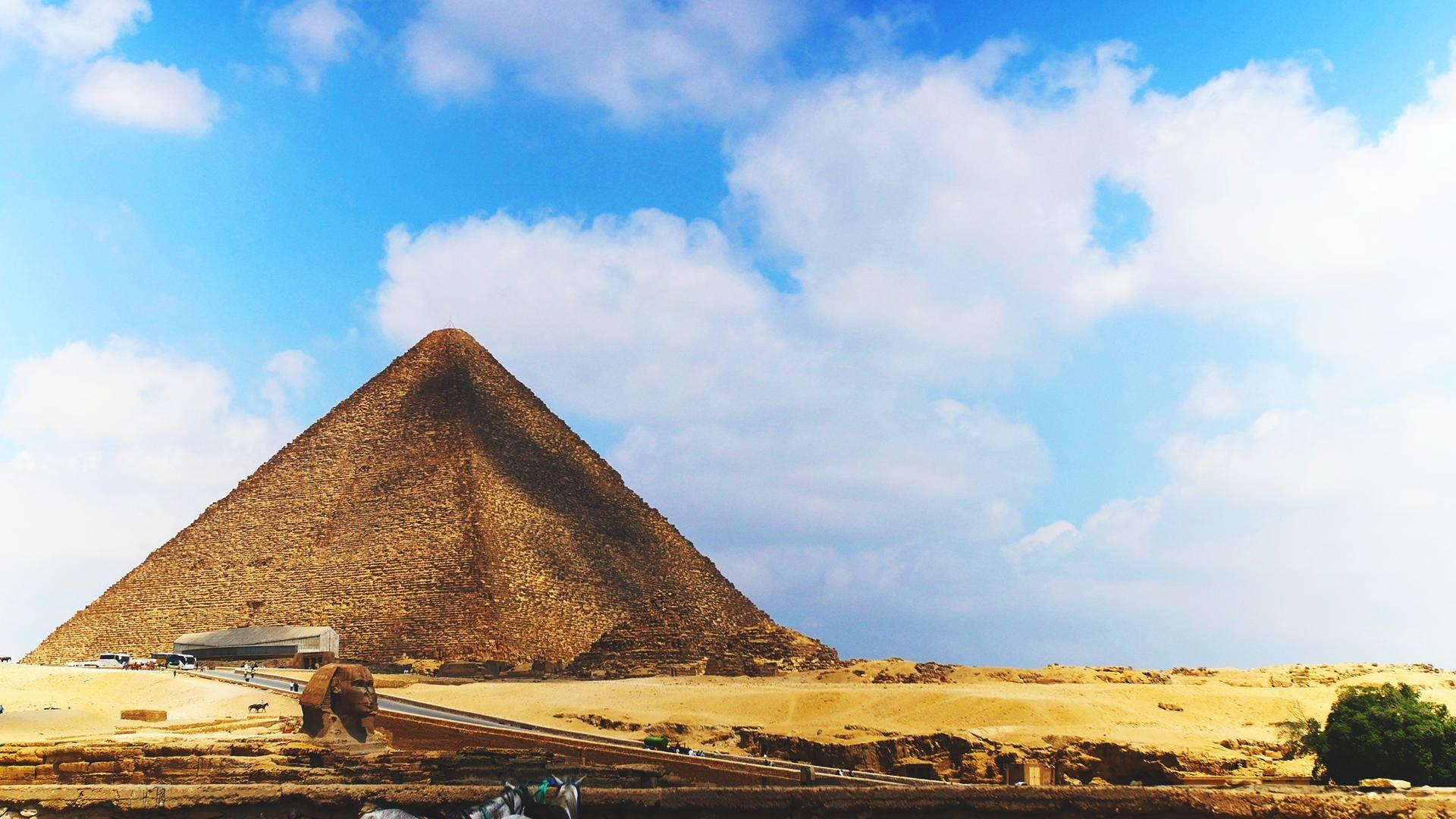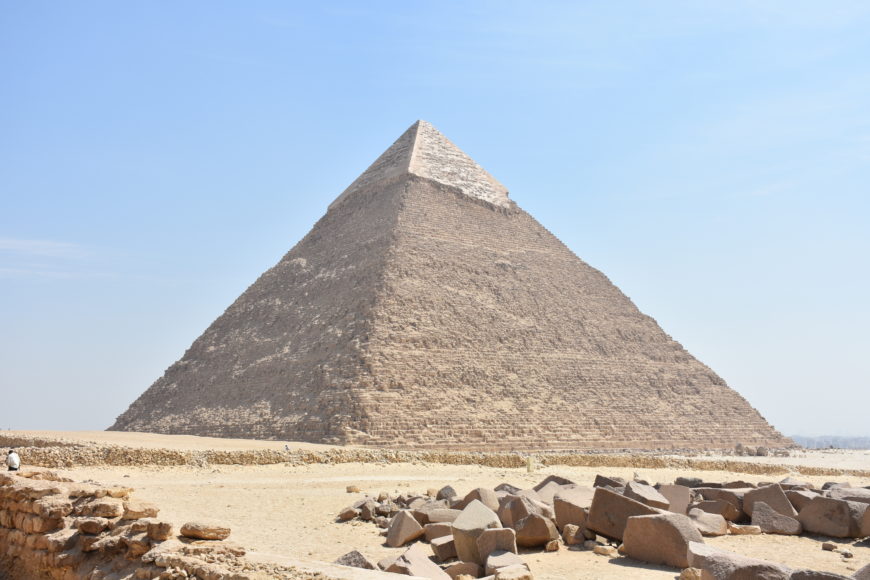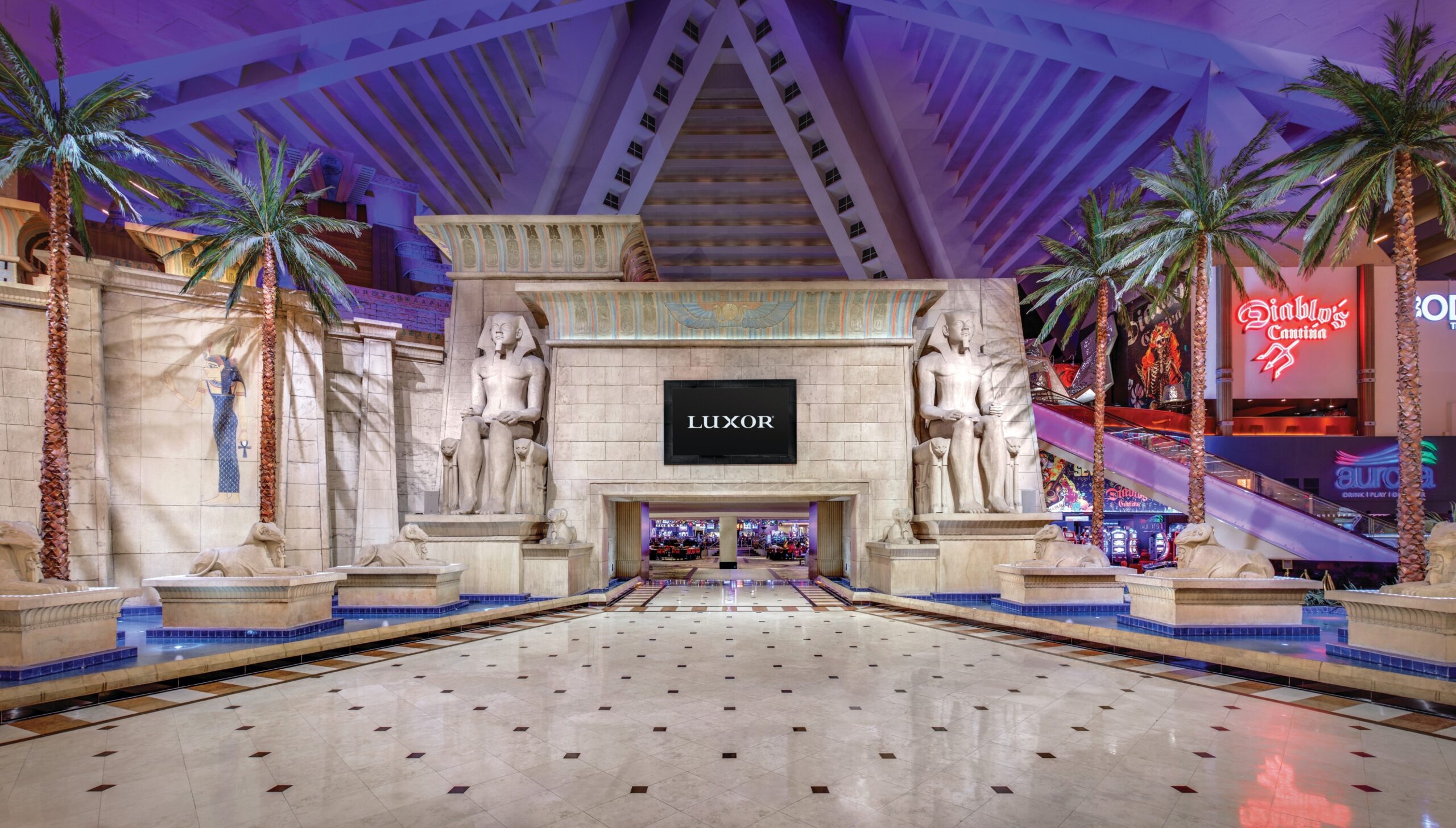Journey Back in Time: Valley of the Kings in Egypt

Introduction
Overview of the <a href="https://ariatravels.com/the-valley-of-the-kings-unraveling-the-mysteries-of-ancient-tombs/”>Valley of the Kings in Egypt
Nestled on the west bank of the Nile, the Valley of the Kings is a mesmerizing archaeological site that served as the royal burial ground of ancient Egypt. Spanning over 3,000 years, it houses around 63 tombs, including those of famed pharaohs such as Tutankhamun and Ramses II. This valley is an emblem of Egypt’s rich history and showcases impressive craftsmanship and artistry in its burial structures.
Significance of the Valley of the Kings in history
The Valley of the Kings holds monumental significance for several reasons:
- Cultural Heritage : It is a testament to the incredible achievements of ancient Egyptian civilization, reflecting their beliefs and practices surrounding death and the afterlife.
- Archaeological Richness : The site has revealed invaluable artifacts and inscriptions that have deepened our understanding of ancient Egyptian society.
- Tourism and Research : Today, it attracts historians, archaeologists, and tourists alike, eager to delve into the mysteries of the past.
With its allure and historical weight, the Valley of the Kings remains an indispensable part of Egypt’s legacy.
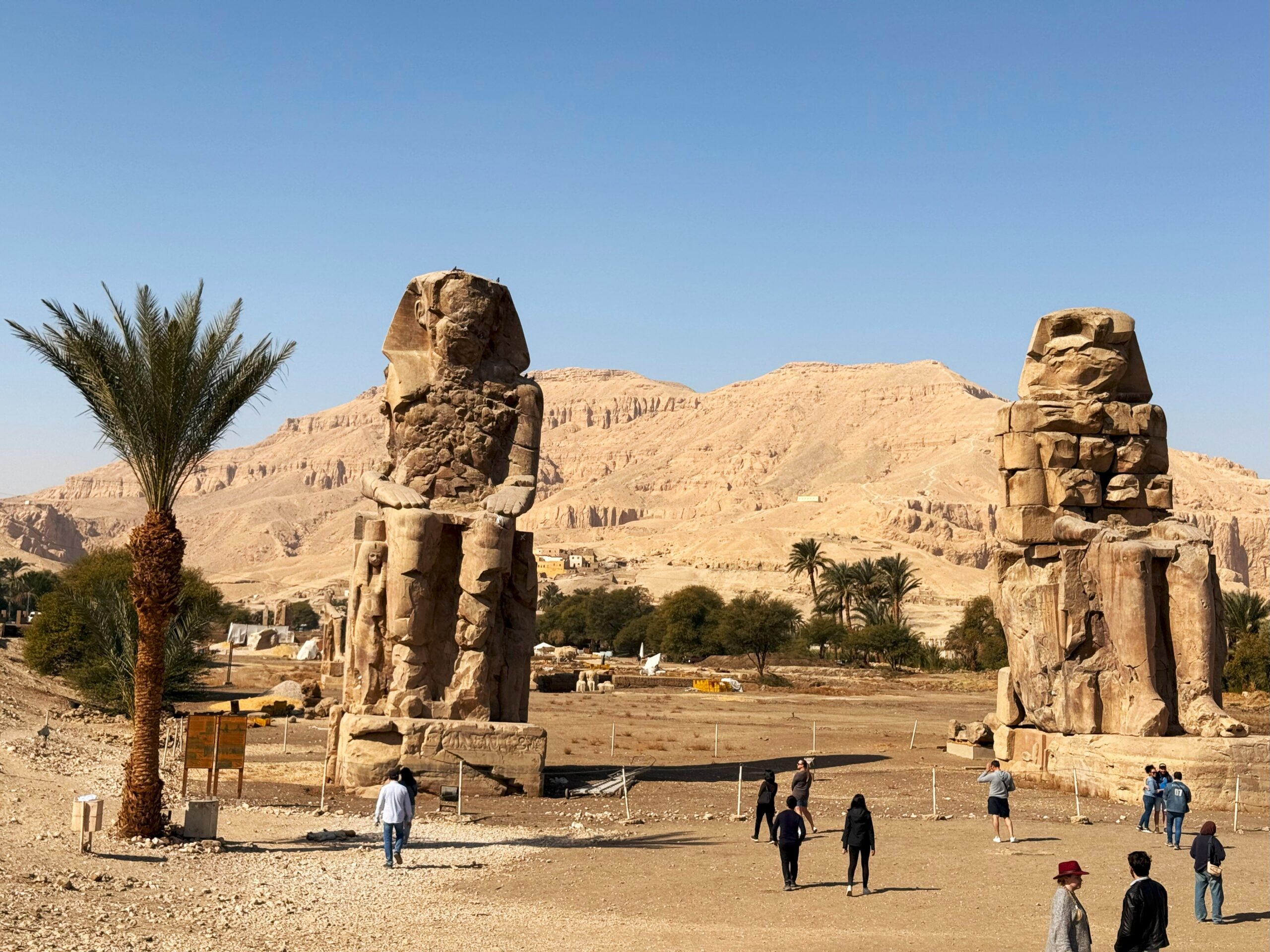
History of the Valley of the Kings
Creation and purpose of the burial ground
The Valley of the Kings was established during the reign of the 18th Dynasty, around 1550 BCE, as a response to ongoing tomb raiding in earlier burial sites. The valley was carefully chosen for its remote and concealed location, providing excellent protection for the deceased pharaohs. Its primary purpose was to be a sacred repository for the royal dead, ensuring they could journey into the afterlife safely.
Key aspects of its creation include:
- Isolation : Tucked between limestone cliffs, the valley was designed to thwart thieves.
- Symbolism : The burial practices reflected ancient Egyptians’ beliefs in resurrection and immortality.
Notable archaeological discoveries in the valley
From the discovery of Tutankhamun’s tomb in 1922 by Howard Carter to the fascinating gilded coffins of the Valley’s many pharaohs, numerous treasures have emerged from this ancient site. Some notable finds include:
- The Golden Mask of Tutankhamun : A remarkable artifact that represents the pinnacle of ancient Egyptian artistry.
- The tomb of Seti I : Known for its intricate and beautifully preserved wall paintings.
- KV5 : Residing as the largest tomb in the valley, it revealed the remains of numerous princes of Ramesses II, providing insights into the royal lineage.
These discoveries continue to unveil the mystery and opulence of the ancient Egyptian civilization, further enriching the historical tapestry of the Valley of the Kings.
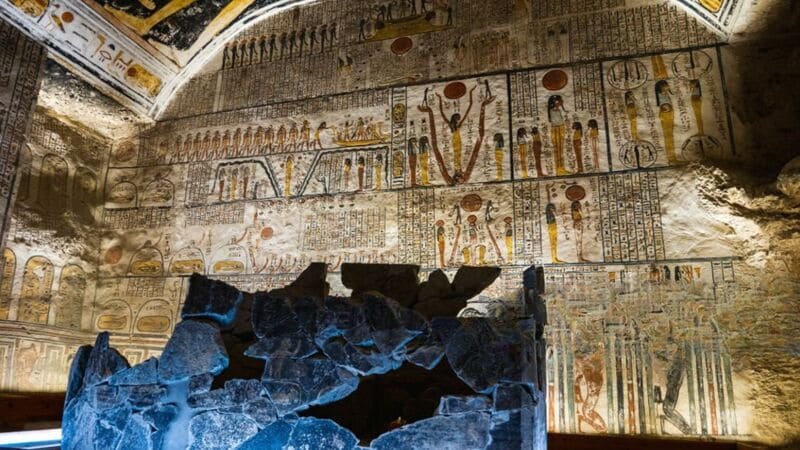
Tomb Architecture and Paintings
Design and layout of tombs in the valley
The tombs in the Valley of the Kings are marvels of architecture, meticulously designed to serve both functional and spiritual purposes. Each tomb typically features a long entrance corridor leading into a burial chamber, with intricate passageways that reflect the pharaoh’s journey into the afterlife. The layout often includes:
- Antechambers and storerooms : Where treasures for the afterlife were kept.
- Pit graves : Where the mummies were placed, sometimes accompanied by intricate sarcophagi.
The unique designs highlight the Egyptians’ architectural ingenuity and spiritual beliefs.
Importance of hieroglyphic inscriptions and paintings
The walls of these tombs are adorned with vivid hieroglyphics and detailed paintings, serving both decorative and instructional roles. These inscriptions were not merely artistic; they provided essential guidance for the deceased in their journey through the afterlife. The significance of these artworks includes:
- Cultural narratives : They depict scenes from daily life, religious rituals, and mythological events.
- Spiritual protection : Inscriptions often include spells from the “Book of the Dead,” meant to ensure safe passage to the afterlife.
These vibrant artworks not only reflect the artistic mastery of ancient Egyptians but also encapsulate their profound beliefs, making them invaluable to our understanding of their civilization.
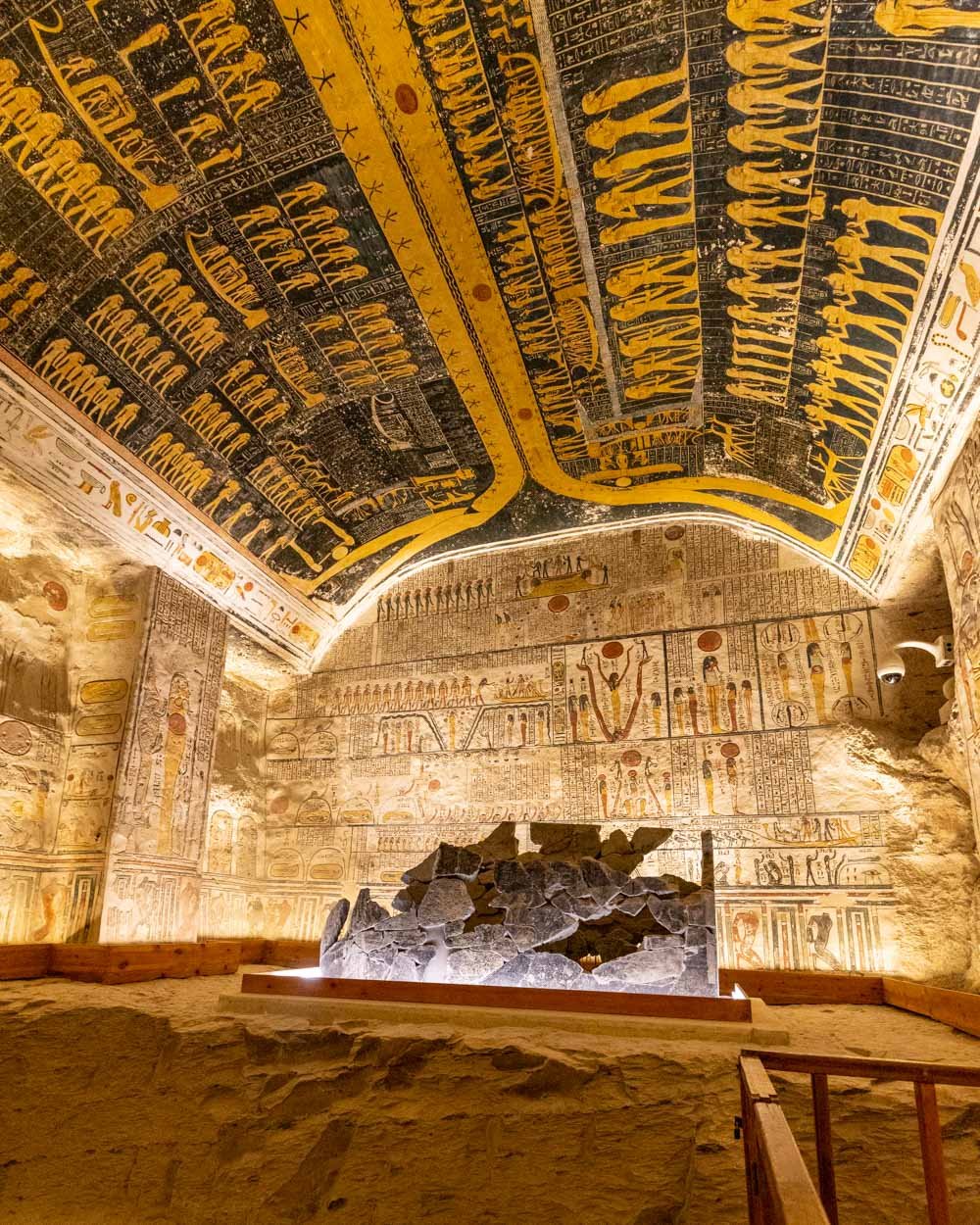
Famous Tombs in the Valley of the Kings
Tutankhamun’s tomb and its treasures
Arguably the most famous of all, Tutankhamun’s tomb (KV62) was discovered almost intact in 1922 by Howard Carter, capturing the world’s imagination. The sheer opulence of this tomb is breathtaking, housing over 5,000 artifacts, including:
- The Golden Mask : A stunning burial mask made of gold and adorned with precious stones.
- Chariots : Elaborate royal chariots that demonstrate ancient Egyptian craftsmanship.
- Funerary items : Such as jewelry, furniture, and canopic jars, highlighting beliefs in the afterlife.
These treasures not only represented wealth but also the beliefs and customs of ancient Egyptian society.
KV5
KV5, the largest tomb in the valley, stands out for its sheer size and historical significance. Initially believed to be the tomb of one of Ramesses II’s sons, it houses numerous chambers and corridors, with more than 120 burial shafts. Some intriguing features include:
- Royal lineage : The tomb provides a glimpse into the royal family dynamics of the 19th Dynasty.
- Unfinished decorations : These highlight the complexity of ancient Egyptian burial practices.
The size and layout showcase the importance of Ramesses II’s family in the context of ancient Egyptian history.
Tomb of the Sons of Ramesses II
Another significant tomb associated with Ramesses II is the Tomb of the Sons, located in KV5. This site is particularly notable for housing the remains of several of his offspring, illuminating the following aspects:
- Family legacy : It demonstrates the depth of lineage and the importance of family in pharaonic rule.
- Artistic elements : The tomb features beautiful wall paintings that offer insights into royal life and beliefs.
These tombs collectively highlight the grandeur of the New Kingdom and provide valuable context for understanding ancient Egyptian civilization. Each discovery unveils stories from a time long past, enriching our appreciation for this ancient world.

Uncovering Ancient Mysteries
Ongoing excavations and research
The Valley of the Kings continues to be a focal point for archaeologists and historians eager to unlock its secrets. Recent excavations have revealed new chambers and artifacts that deepen our understanding of ancient Egyptian life. Some ongoing projects include:
- Modern technology : Techniques like ground-penetrating radar are used to locate hidden tombs without disturbing the integrity of the site.
- Team collaborations : International teams are working together, combining expertise to reevaluate past findings and draw new conclusions.
These efforts are shedding light on the valley’s complex history and ensuring it remains a vibrant field of study.
Interpretation of symbols and artifacts
The artifacts unearthed during these excavations come with a wealth of symbols, each telling a story about beliefs, rituals, and daily life. Some key aspects of their interpretation include:
- Hieroglyphics : Understanding these inscriptions is vital for piecing together historical narratives, religious practices, and cultural values.
- Symbolic items : Objects like ankh symbols or scarabs are essential for decoding underlying themes of life and death.
As researchers delve deeper into the valley’s history, each discovery serves as a reminder of the complexity and richness of ancient Egyptian civilization, continuously inspiring wonder and admiration for this remarkable era.
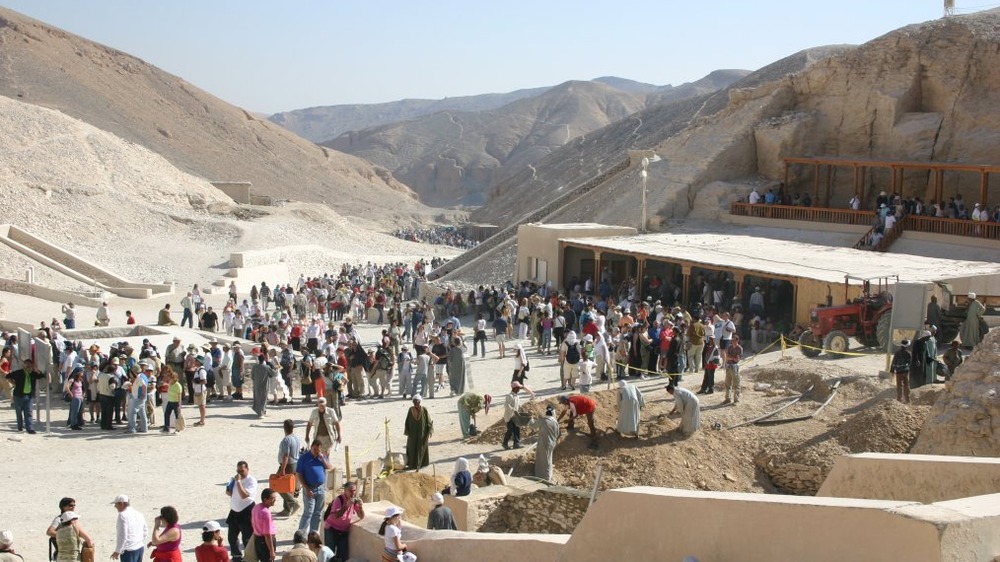
Conservation Efforts and Tourism
Preservation challenges and solutions
Conserving the Valley of the Kings presents unique challenges due to environmental factors and increased tourism. Factors such as humidity, temperature fluctuations, and human activity can threaten the integrity of delicate artifacts and tomb interiors. Some effective preservation strategies include:
- Controlled access : Limiting the number of visitors to sensitive areas to reduce wear and tear.
- Climate control systems : Installing specialized equipment to monitor and stabilize conditions within tombs.
These measures are essential to sustaining this historical treasure for future generations.
Visitor experience and regulations in the valley
With growing interest in ancient Egyptian culture, visitor experience has become a crucial focus. Regulations have been implemented to ensure that tourism does not compromise the valley’s integrity. Some key aspects include:
- Guided tours : Offering informative tours led by knowledgeable guides helps educate visitors on the significance of what they are seeing.
- Regulating photography : Restrictions on photography, especially flash photography, protect artworks and hieroglyphics from damage.
Through these thoughtful regulations, tourists can enjoy a memorable and respectful experience while helping to safeguard the valley’s treasures, ensuring that its stories continue to be told for generations to come.
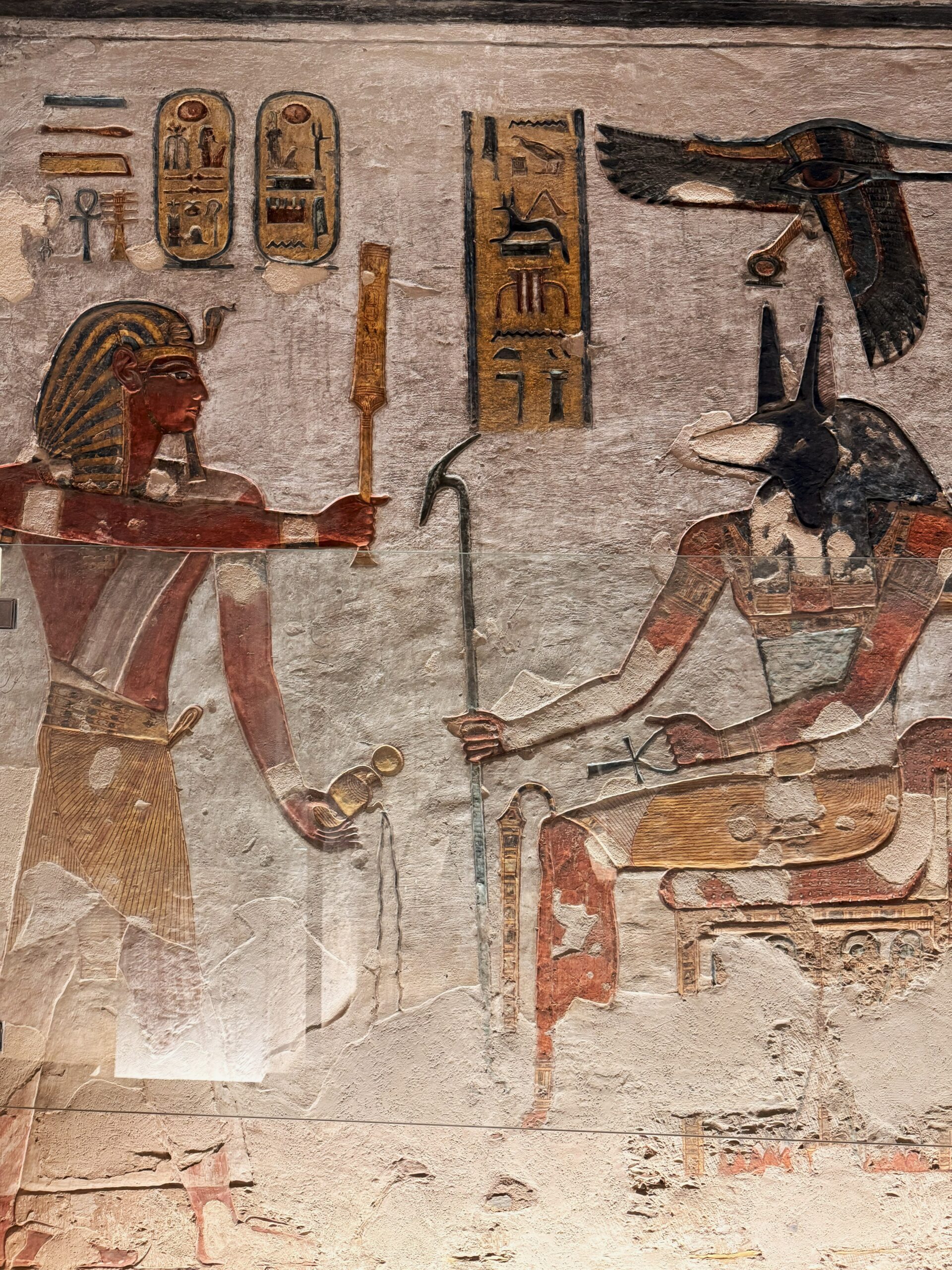
Legacy of the Valley of the Kings
Influence on Egyptian culture and tourism
The Valley of the Kings holds a profound legacy that extends far beyond its geographical location. It remains a powerful symbol of ancient Egyptian culture, inspiring countless works of art, literature, and film. Its impact on tourism is equally significant, with millions flocking to behold its wonders. Key influences include:
- Cultural representation : The valley has shaped perceptions of ancient Egypt as a cradle of civilization.
- Global tourism : Tour operators design trips centered around the valley, promoting Egyptian heritage worldwide.
This rich historical tapestry enhances Egypt’s appeal as a premier destination for travelers.
Continuing legacy in archaeology and exploration
The Valley of the Kings also stands as a beacon for modern archaeology and exploration. It has set benchmarks for methods used by researchers today. Notable impacts include:
- Methodological advances : Innovations in excavation techniques and preservation strategies have been inspired by the findings in the valley.
- Educational initiatives : Universities and institutions incorporate studies of the valley into their curricula, fostering future generations of archaeologists.
Ultimately, the Valley of the Kings serves as a vibrant link between past and present, enriching our understanding of history and continuing to inspire curiosity about the enigmatic world of ancient Egypt.

